Special Report
These May Be the Very Last Unspoiled Places in America

Published:
Last Updated:

Despite the bustle and complexity of modern life, the human tendency to take up more and more space, spreading the bustle ever outward, there are still places in the U.S. that remain untrammeled by the human footprint, except, perhaps, the ephemeral prints of hiking shoes.
Many of the country’s wild places have remained so because of state or federal protections — these were the most visited national parks in 2020.
Others are simply so remote and difficult to access that their very wild nature has kept them undeveloped. In a few cases, places appear unspoiled but, in fact, were once built up but have since lost their human inhabitants. Such places attract, not so much the nature lovers, but the curious.
It is notable that not all unspoiled places are remote or inaccessible. Many are within a few hours drive or less from population centers. Most Americans needing a break from the tumult around them can find natural serenity and solitude. For those who want to avoid human interaction altogether, here are the furthest places you can get from other humans in every state.
Click here to see the 35 possibly unspoiled places in America
To identify the last unspoiled places in America, 24/7 Tempo consulted different internet sources to find secluded locations where people do not live regularly and rarely see foot traffic. To ensure a diverse list, we limited our selection of National Parks and popular, overused protected areas. Nearest city and its population was determined using the US Census Bureau, and population figures are for April 1, 2020.
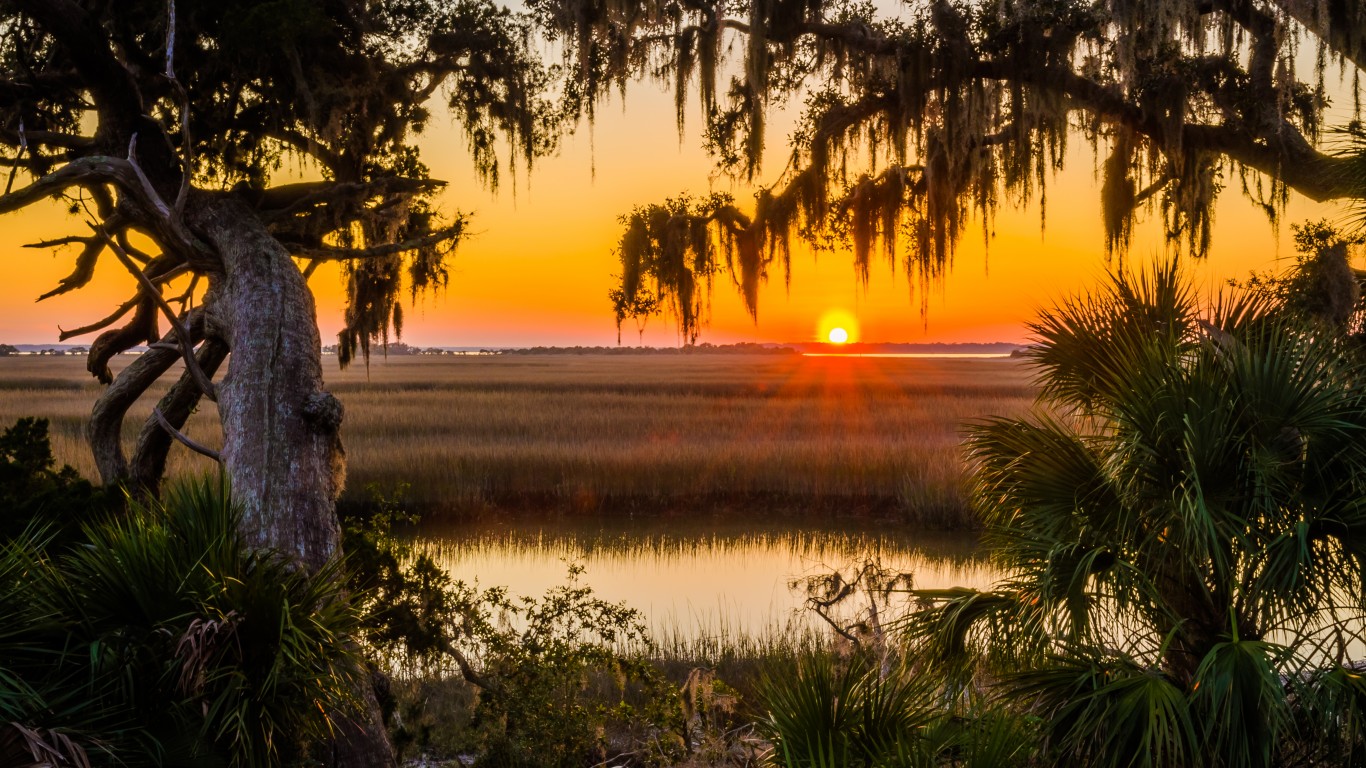
1. Cumberland Island, Georgia
> Closest city: St. Mary’s, Georgia (population: 18,256)
With 17 miles of beach and 6,800 acres of federally protected land, Cumberland Island is Georgia’s largest and southernmost barrier island. Noted for its wildlife and history, the island is home to feral horses, loggerhead turtles, and the ruins of a mansion built by Andrew Carnegie’s brother.
[in-text-ad]

2. Apostle Islands, Wisconsin
> Closest city: Duluth, Minnesota (population: 86,697)
There are 22 islands in this group, scenic and accessible for birding and enjoying nature, from bears to native plants. There are also sea caves and historic lighthouses.

3. Kennecott, Alaska
> Closest city: Anchorage, Alaska (population: 291,247)
Amidst the federally protected parks, forests, and reserves between Anchorage and Glacier National Park, Kennecot is an abandoned mining town centered around copper mines active in the early 20th century. It was named a National Historic Landmark in 1986 and offers hiking opportunities today.
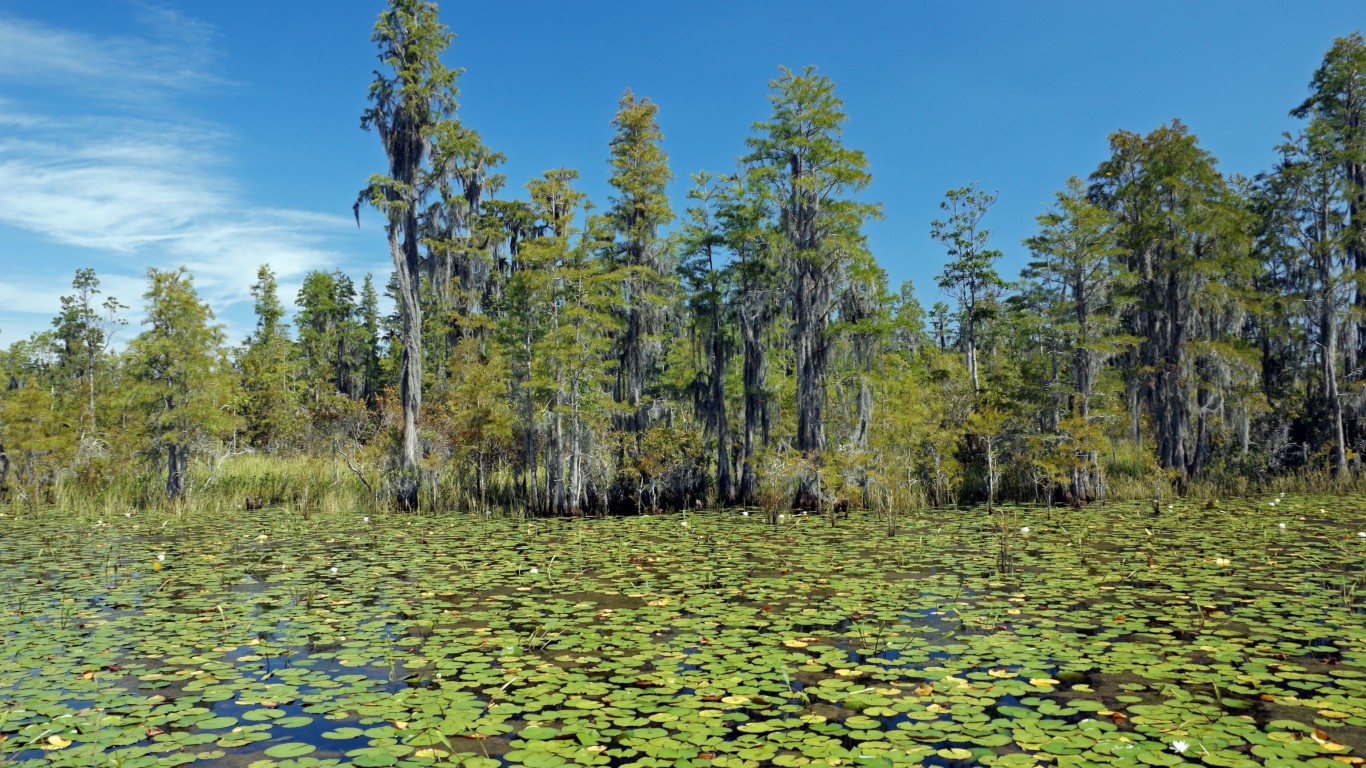
4. Okefenokee Swamp, Georgia-Florida
> Closest city: Jacksonville, Florida (population: 949,611)
Largely protected as a National Wildlife Refuge and designated as a National Natural Landmark, Okefenokee swamp is a 438,000 acre wetland straddling the Florida-Georgia border. Though it attracts about 600,000 visitors each year, its atmosphere is one of unspoiled solitude.
[in-text-ad-2]

5. Rock Lake, Weminuche Wilderness, Colorado
> Closest city: Alamosa, Colorado (population: 9,806)
Surrounded by wilderness in Colorado’s San Juan National Forest, this remote lake is a hiking Mecca for the cognoscenti. The nine mile loop trail takes hikers over challenging terrain, not meant for beginners.

6. North Maine Woods, Maine
> Closest city: Houlton, Maine (population: 6,055)
The North Maine Woods is a forested region encompassing 3.5 million acres and two wild rivers, the St. John and the Allagash. With camping, hiking and fishing opportunities, this is what enjoying nature is all about.
[in-text-ad]

7. Bob Marshall Wilderness, Montana
> Closest city: Helena, Montana (population: 32,091)
Named for a celebrated conservationist and co-founder of The Wilderness Society, this million acre stretch of the Continental Divide is a beneficiary of Marshall’s promotion of roadless wilderness. The scenic peaks, waterfalls, and lakes provide the perfect setting for memorable hiking and camping experiences.
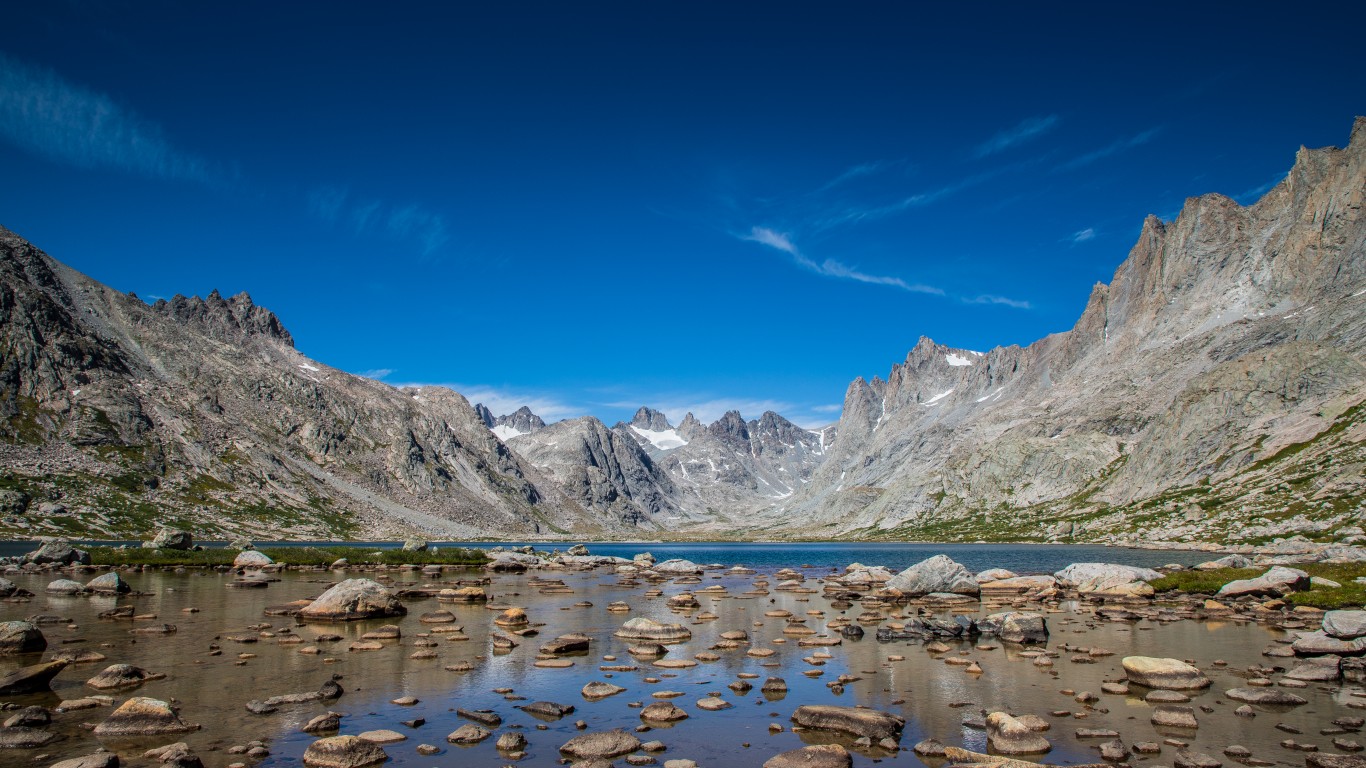
8. Gannett Peak, Wyoming
> Closest city: Rock Springs, Wyoming (population: 23,526)
Considered one of the most difficult mountains to climb among the 50 states’ tallest, Gannett Peak is part of the Greater Yellowstone Ecosystem. At 13,810 feet, it is the highest mountain in Wyoming and the highest of the Rockies outside of Colorado.

9. Black Hills, South Dakota and Wyoming
> Closest city: Rapid City, South Dakota (population: 74,703)
Home to Mount Rushmore, one of America’s most famous landmarks, the Black Hills never feel overrun with tourists beyond the visages of the four presidents. It’s stark landscapes are largely undeveloped and memorably eerie.
[in-text-ad-2]
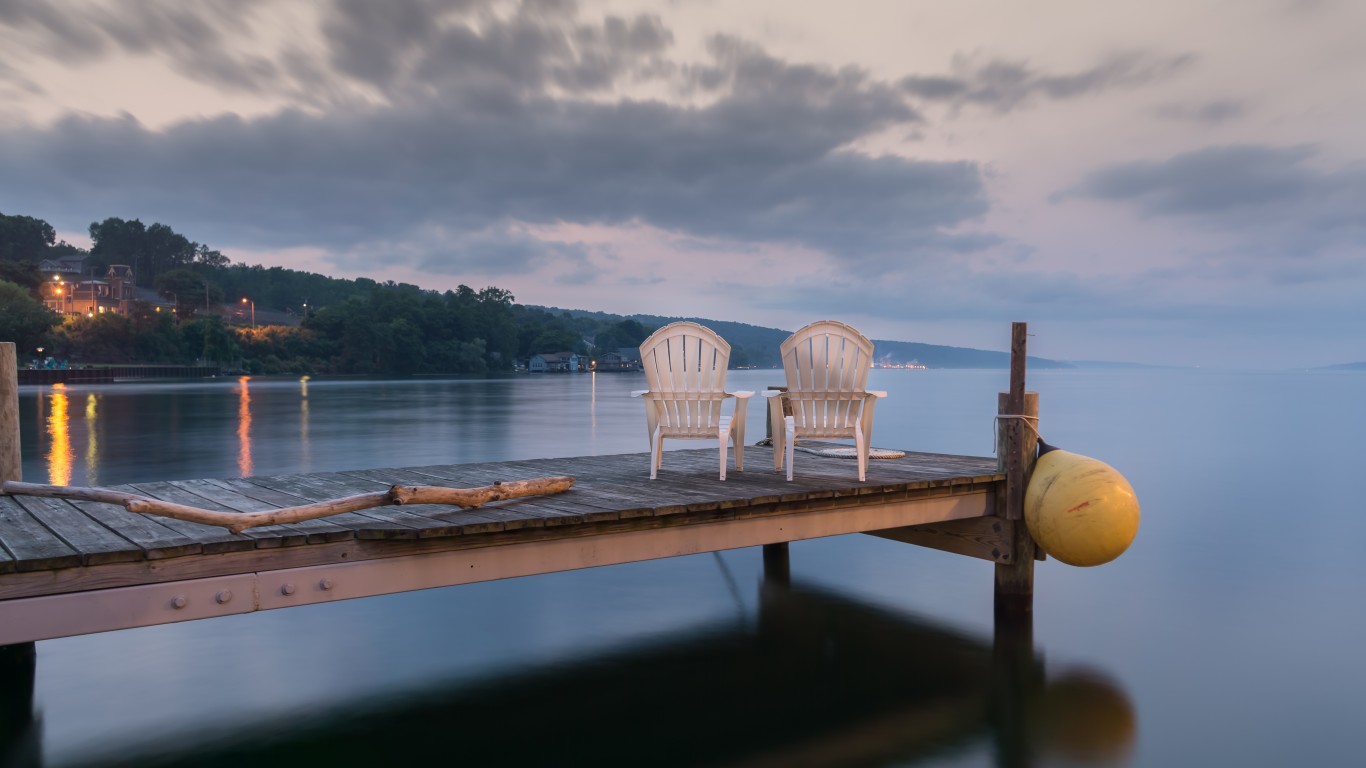
10. Finger Lakes, New York
> Closest city: Ithaca, New York (population: 32,108)
A legacy of the last ice age, these 11 narrow north-south oriented lakes define central New York’s Finger Lakes region. Their shores are bounded by scenic farms, vacation homes, and, more famously, over 100 wineries. The region is a popular destination for summer recreation and wine tours, yet there are miles of uncluttered scenic expanses.
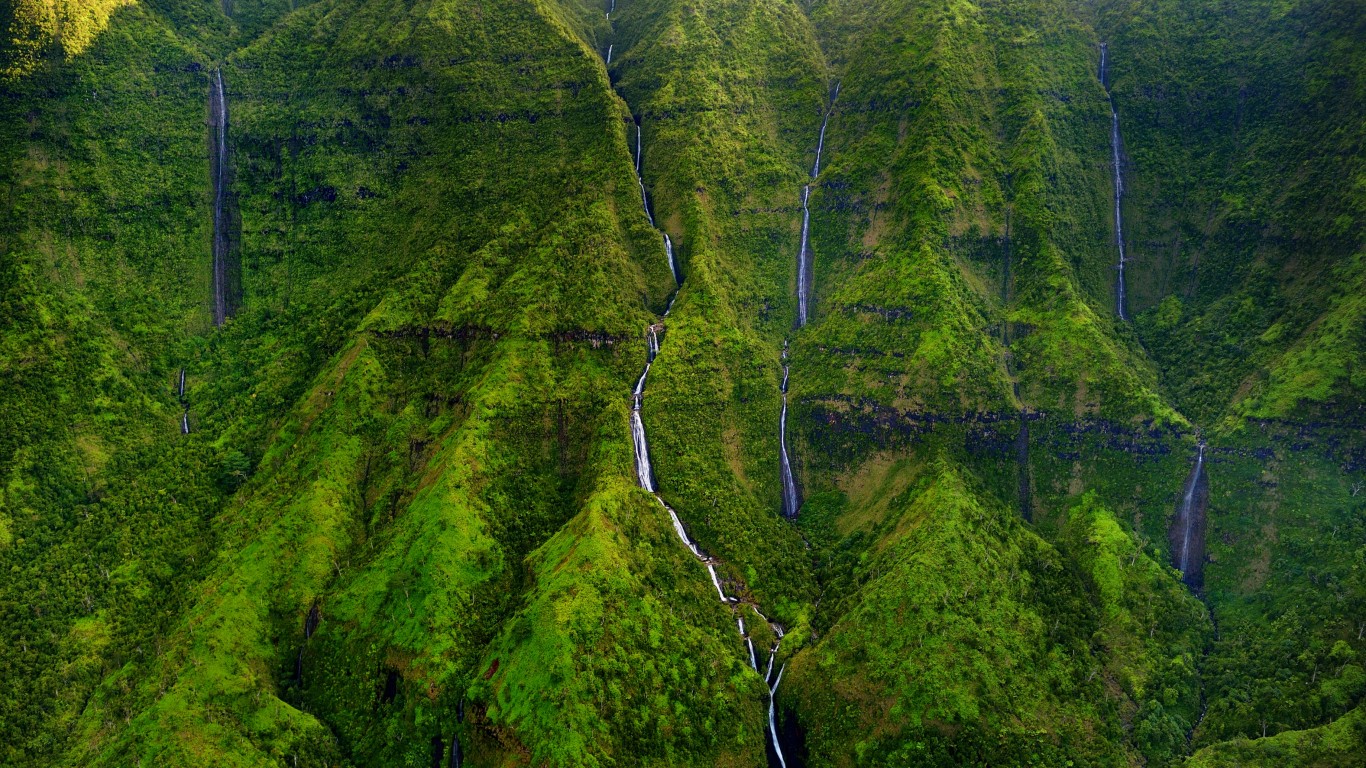
11. Mount Waialeale, Kauaʻi, Hawaii
> Closest city: Lihue, Hawaii (population: 8,004)
Geologically known as a shield volcano, this mountain is the second highest of Hawaii’s Kauai island, at just over 5,000 ft. With an average rainfall of nearly 400 inches a year, its summit is considered one of the wettest places on earth, as proudly noted on a sign at the top.
[in-text-ad]
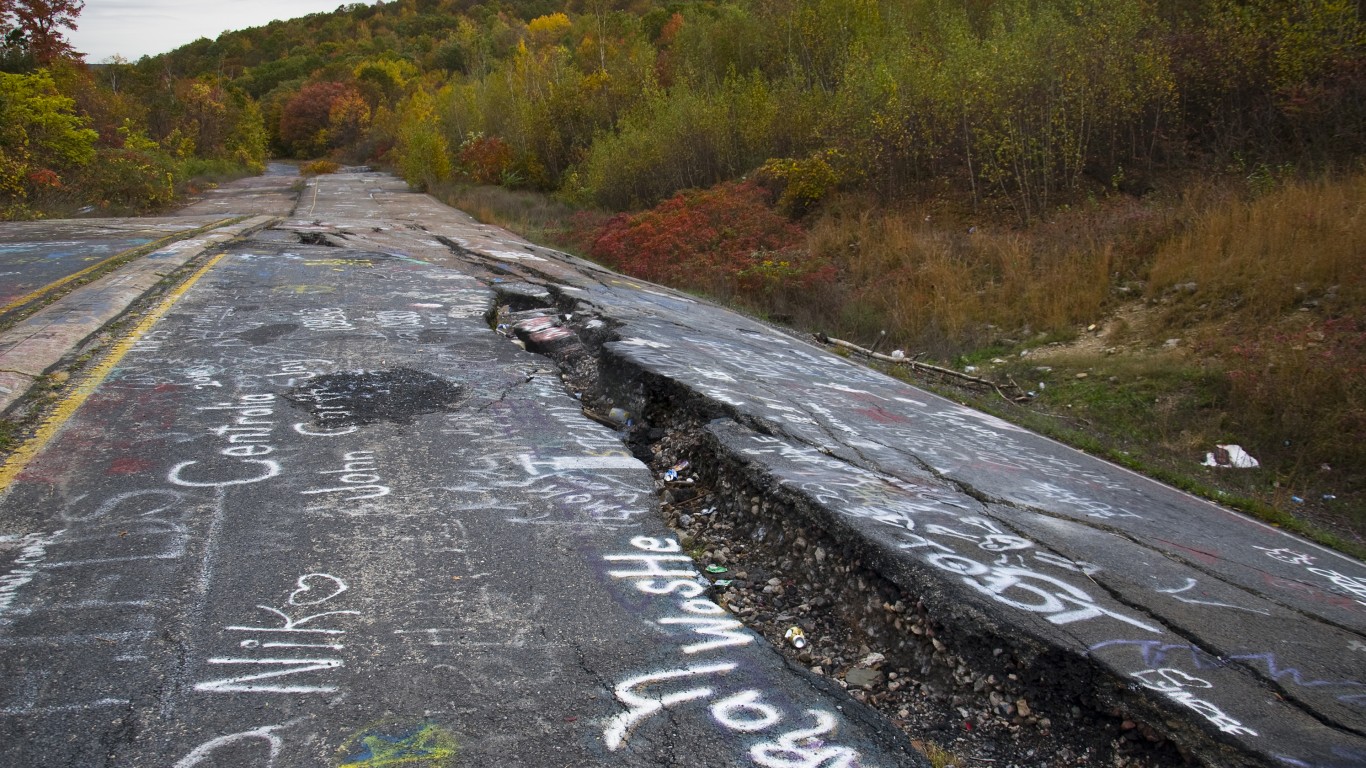
12. Centralia, Pennsylvania
> Closest city: Allentown, Pennsylvania (population: 125,845)
Centralia is a virtual ghost town due to a coal mine fire that has been burning underground since the 1960s. The town’s land has been taken by eminent domain and most of its buildings have been demolished. Five residents have been permitted to live out their lives there; all others have moved on.
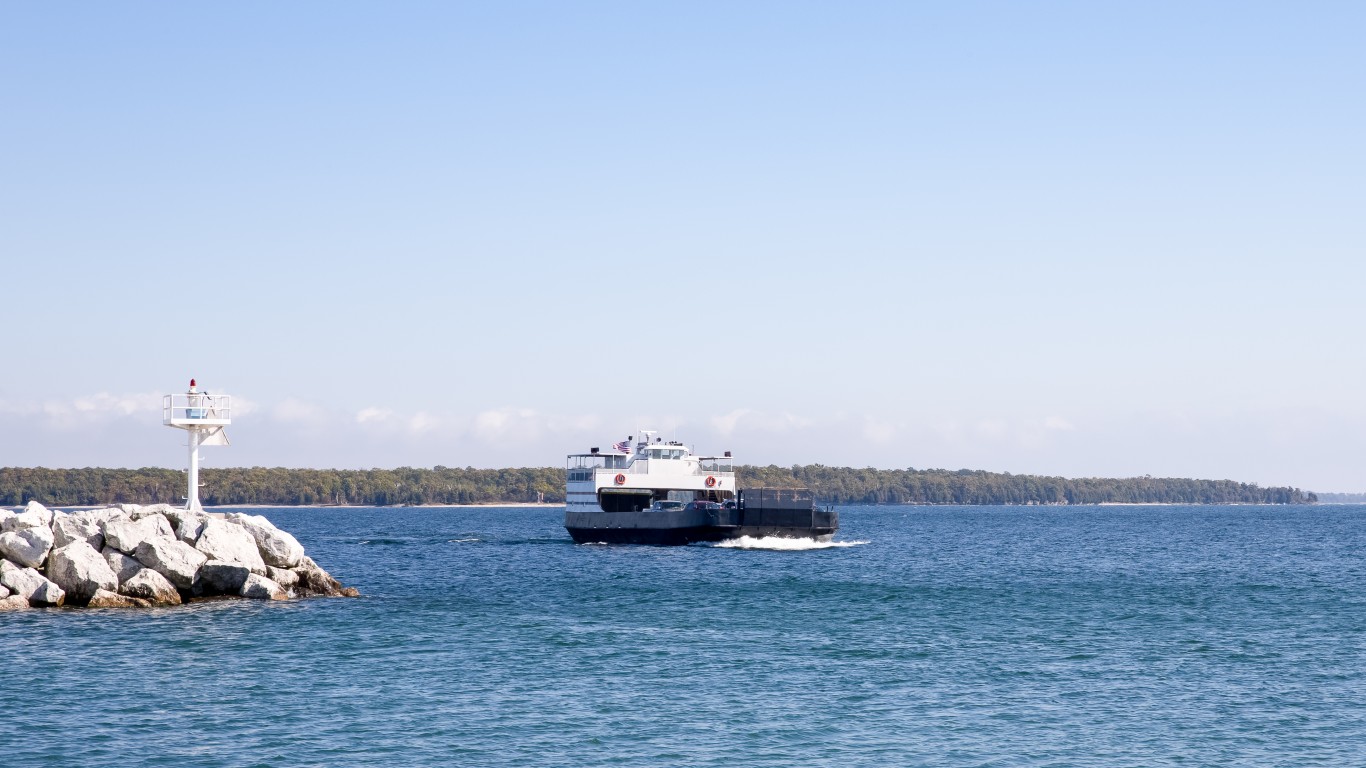
13. Washington Island, Wisconsin
> Closest city: Green Bay, Wisconsin (population: 107,395)
With ferry access and an economy mainly based on tourism, but also farming, logging and fishing, this island on Lake Michigan has a small year-round population, largely descended from Icelandic settlers. The island offers retail shopping and beautiful scenery, including its famous lavender field.

14. Adirondacks, New York
> Closest city: Utica, New York (population: 65,283)
The name “Adirondacks” describes a mountain range, a region, and the 5,000 square mile state park that protects this popular recreational destination from uncontrolled development. The Adirondack Park is a patchwork of public and private land, with the state owned portions designated as “forever wild.”
[in-text-ad-2]
15. Monhegan Island, Maine
> Closest city: Brunswick, Maine (population: 21,756)
Picturesque Monhegan Island, 16 miles from the Maine coast and accessible only by boat, has a dwindling year round population — 14 people in 2019, down from 300 a century ago — has functioned as an artist colony since the 1800s. Ferry boatloads of tourists visit the island every summer to enjoy its charm and easy wooded hikes.

16. Cook Inlet, Lake Clark National Park, Alaska
> Closest city: Anchorage, Alaska (population: 291,247)
This is one of Alaska’s many vast, wild places designated as state or national parks, preserves, reserves and refuges, but it is closer than most to the state’s population concentrated around Anchorage. Visitors are almost guaranteed to witness astounding scenic vistas and an exciting range of wildlife, from brown and black bears to neon orange salmon.
[in-text-ad]

17. Joshua Tree National Park, California
> Closest city: Palm Springs, California (population: 44,575)
Despite its proximity to Palm Springs and Palm Desert, a resort community in the Coachella Valley, home to the famous annual high-end rock concert, Joshua Tree National Park is one of the greatest unspoiled places in the United States, with its desert flora and fauna and unique landforms.
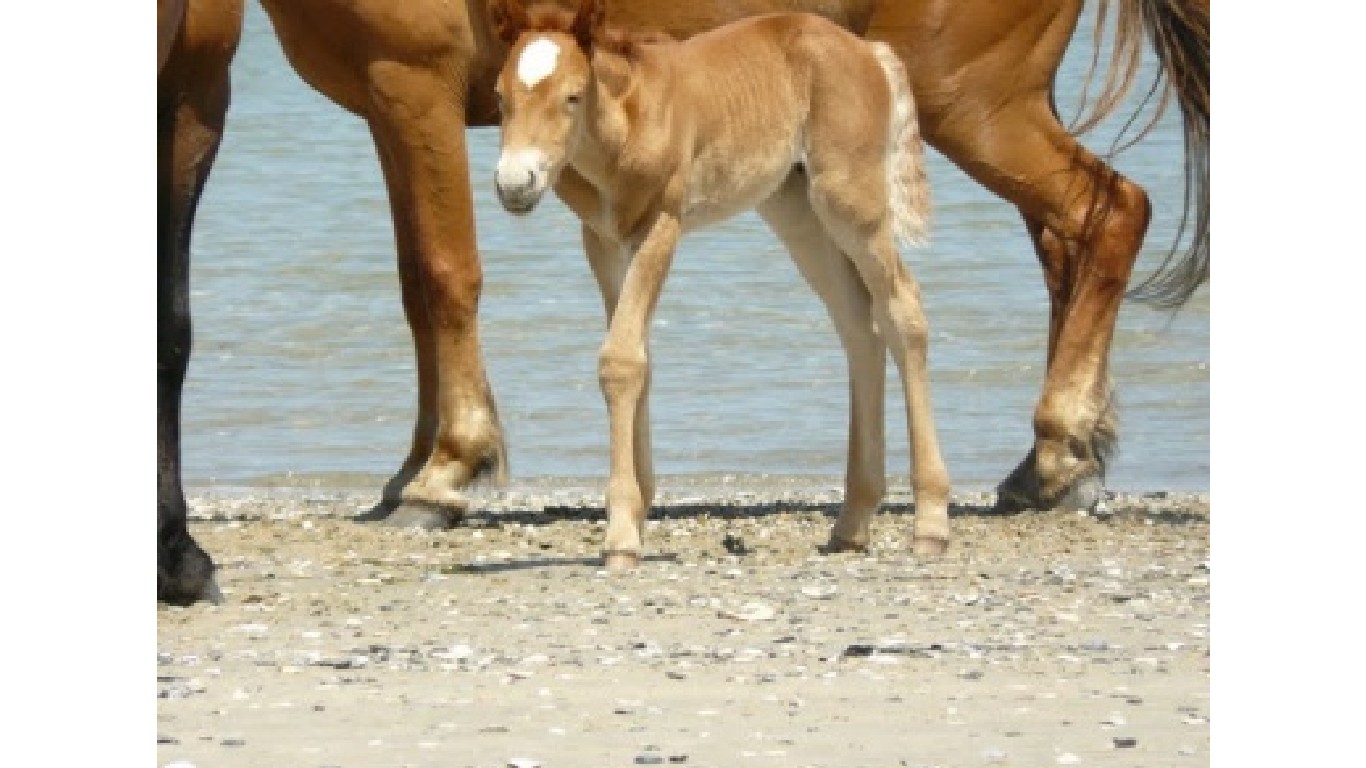
18. Carova Beach, North Carolina
> Closest city: Virginia Beach, Virginia (population: 459,470)
Just south of the Virginia line, Carova Beach is North Carolina’s northernmost barrier island community. First developed in the 1960s, and accessible only by boat, the location is attractive to tourists for its pristine beaches and wild horse population.

19. Texas Hill Country, Texas
> Closest city: San Antonio, Texas (population: 1,434,625)
Noted for its rugged hills which rise 400 to 500 feet above the surrounding flat countryside, the Hill country is known for its history of progressive politics. It is the center of the state’s wine making industry and has become a popular retirement destination. With growing suburban development, it is quickly losing its unspoiled character.
[in-text-ad-2]
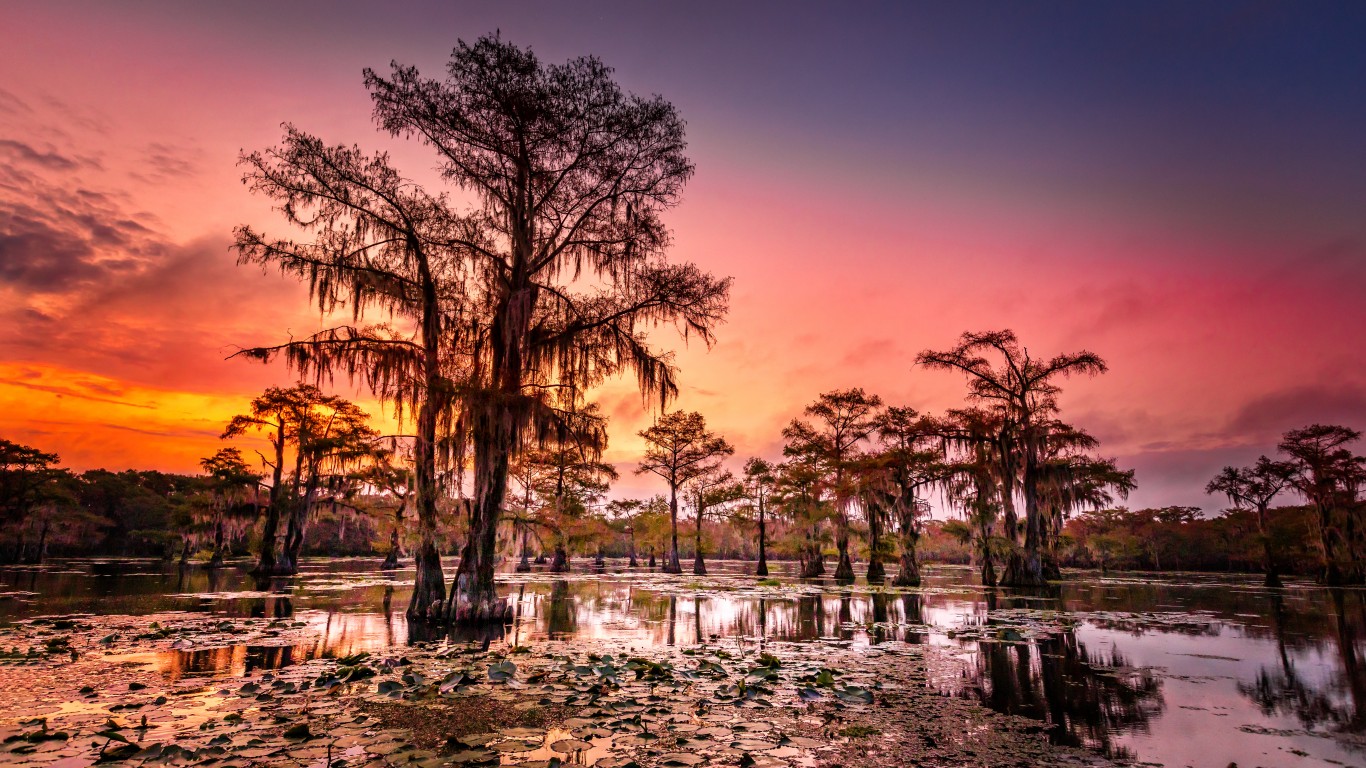
20. Caddo Lake, Texas
> Closest city: Shreveport, Louisiana (population: 187,593)
While located within the Texas state border, Caddo Lake has a decidedly Louisiana feel, with its bayou, alligators, Spanish moss and Cypress trees. Sadly, the lake is currently under serious environmental threat by an invasive species known as Salvinia molesta, a velcro-like weed that kills aquatic life below the surface.
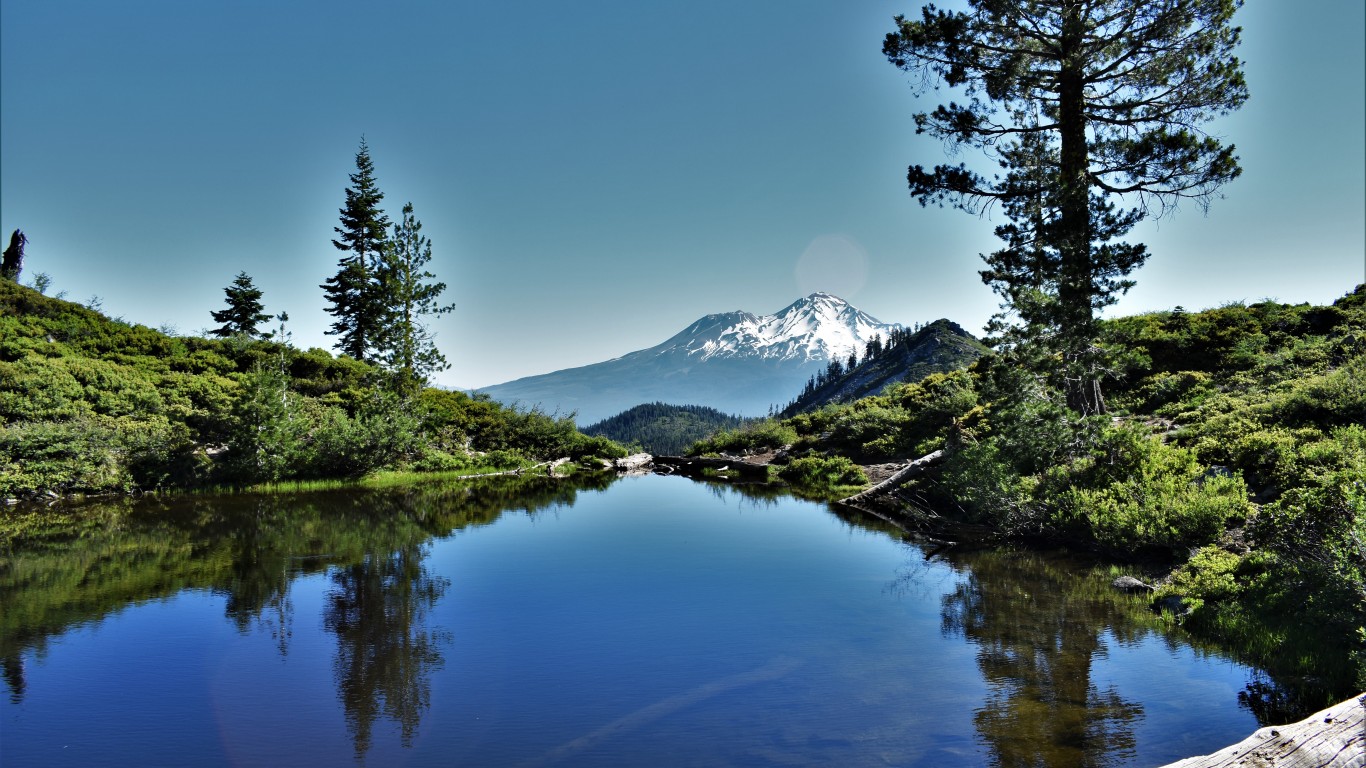
21. Shasta Cascade, California
> Closest city: Redding, California (population: 93,611)
The Shasta Cascade region is in northern California, bordering Oregon and Nevada. A vacation paradise, it includes seven national forests, numerous parks and recreation venues, and an abundance of natural amenities, including lakes, rivers, and waterfalls.
[in-text-ad]
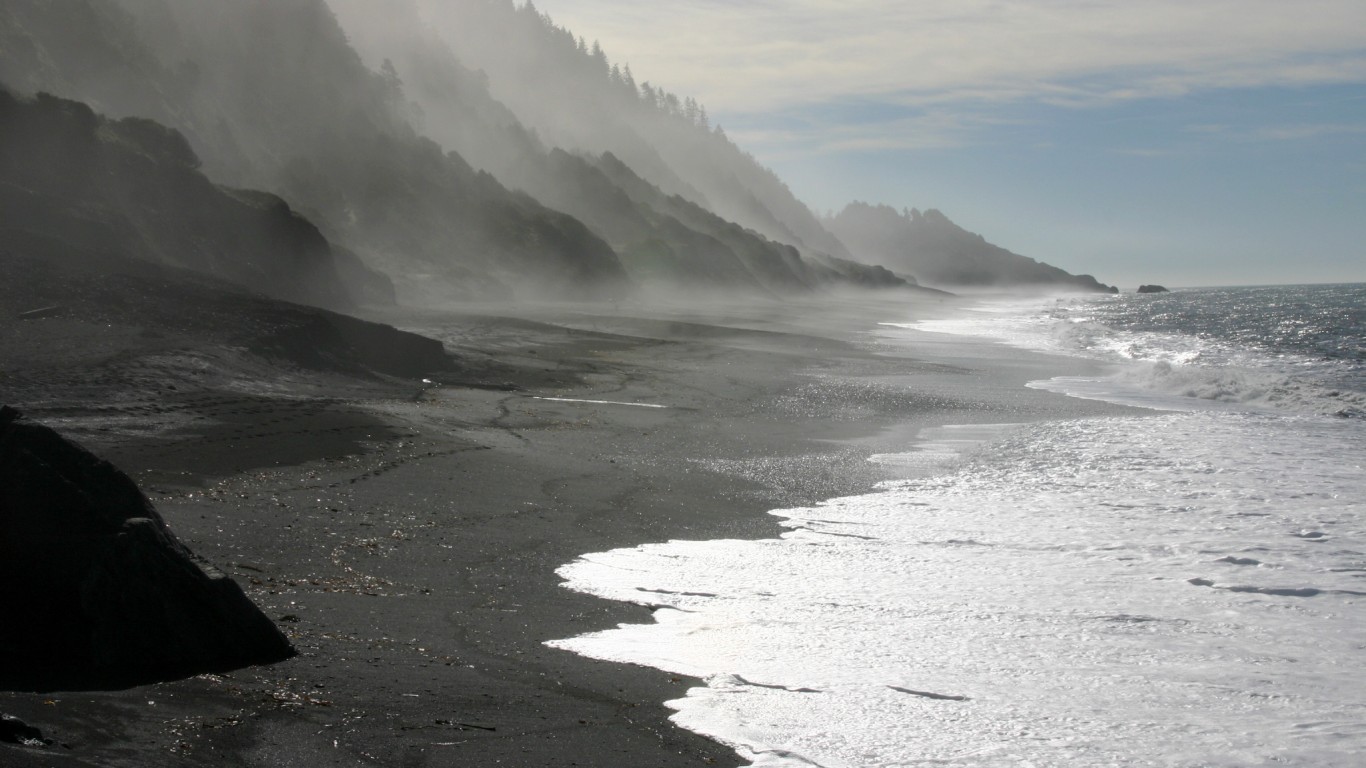
22. Lost Coast, California
> Closest city: Eureka, California (population: 26,512)
This northern coastal region of California, which includes the King Range, discourages development because of the challenges posed by its steep topography and rugged coastline. There are a few communities in the region, living away from major highways, and quite isolated from the rest of the state
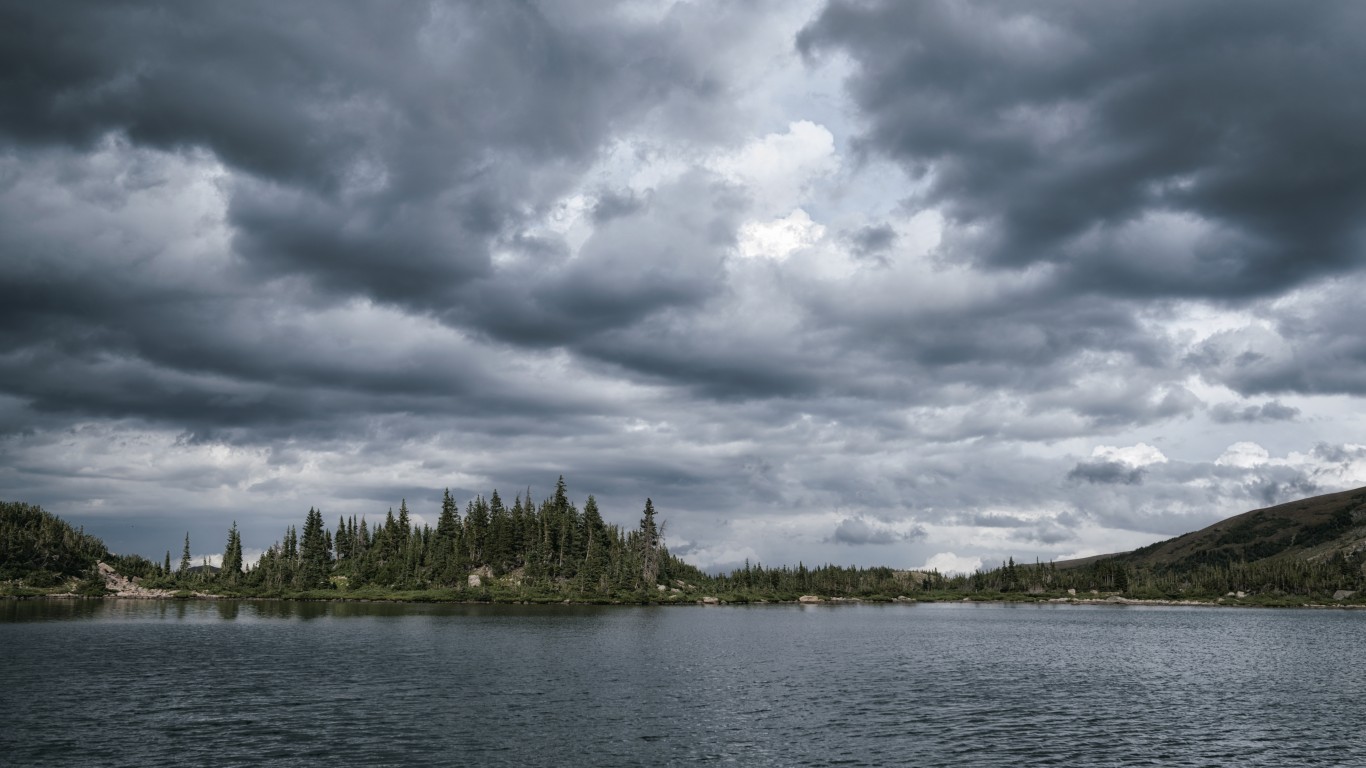
23. Rawah Wilderness, Colorado
> Closest city: Fort Collins, Colorado (population: 169,810)
This northern Colorado wilderness area is managed by the U.S. Forest Service. People visit for its dozens of lakes and 85 miles of hiking trails, with plenty of elevation.
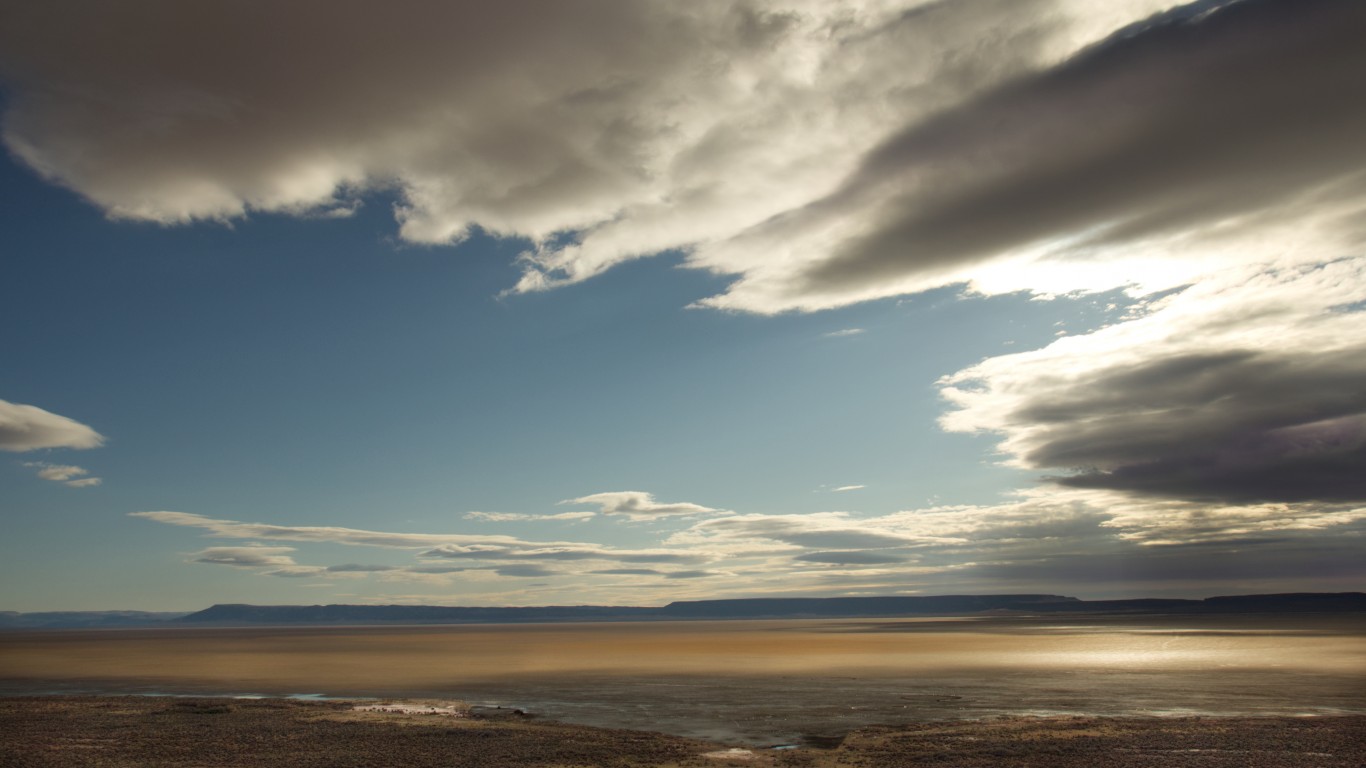
24. Alvord Desert, Oregon
> Closest city: Nampa, Idaho (population: 100,200)
Oregon is not a state that comes to mind when you think of deserts, but its remote Alvord Desert offers a stunning desert landscape with a mountainous backdrop, a destination for camping and star-gazing.
[in-text-ad-2]
25. North Brother Island, New York
> Closest city: New York, New York (population: 8,804,190)
This 20 acre island between the Bronx mainland and Rikers Island was once home to a smallpox hospital, long since abandoned. Now a bird sanctuary, the island was purchased from private owners by the federal government in 2007 and given to New York City.
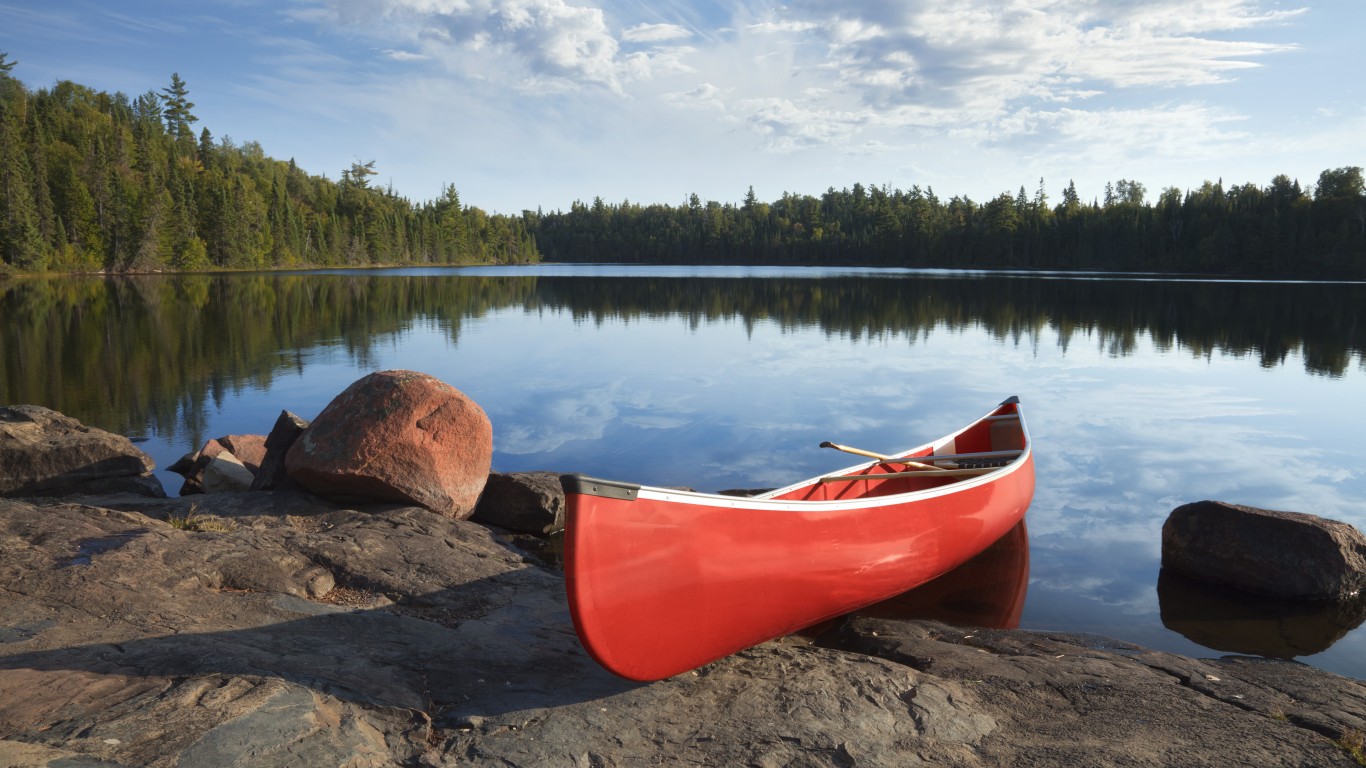
26. Boundary Waters Canoe Area Wilderness, Minnesota
> Closest city: Duluth, Minnesota (population: 86,697)
Minnesota’s Boundary Waters offer a truly wild experience for canoe and wildlife enthusiasts. This unique location is for paddlers who are not intimidated by wilderness camping, portages, bears, and mosquitoes.
[in-text-ad]
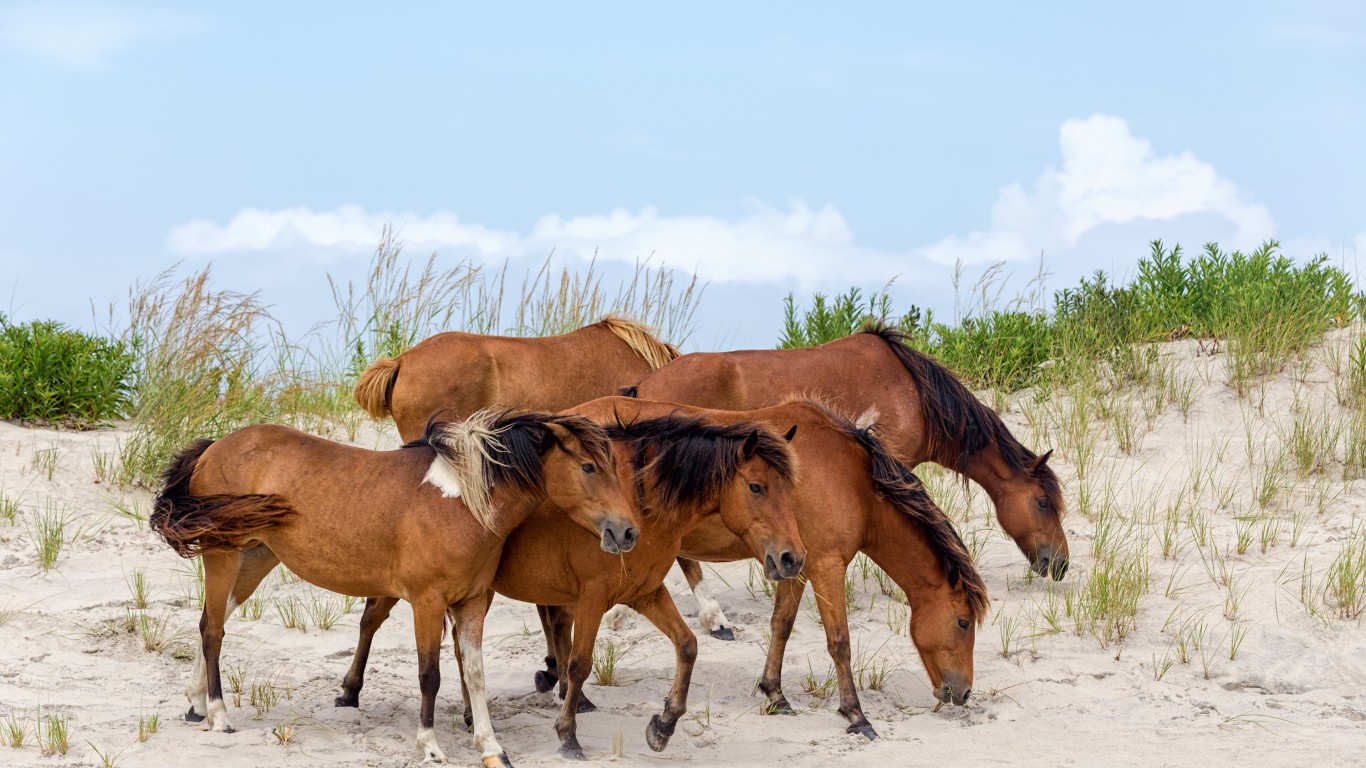
27. Assateague Island, Maryland and Virginia
> Closest city: Pocomoke City, Maryland (population: 33,050)
This marshy barrier island is a designated National Seashore. Unspoiled by development, visitors enjoy the natural beaches and wild ponies that inhabit the island.
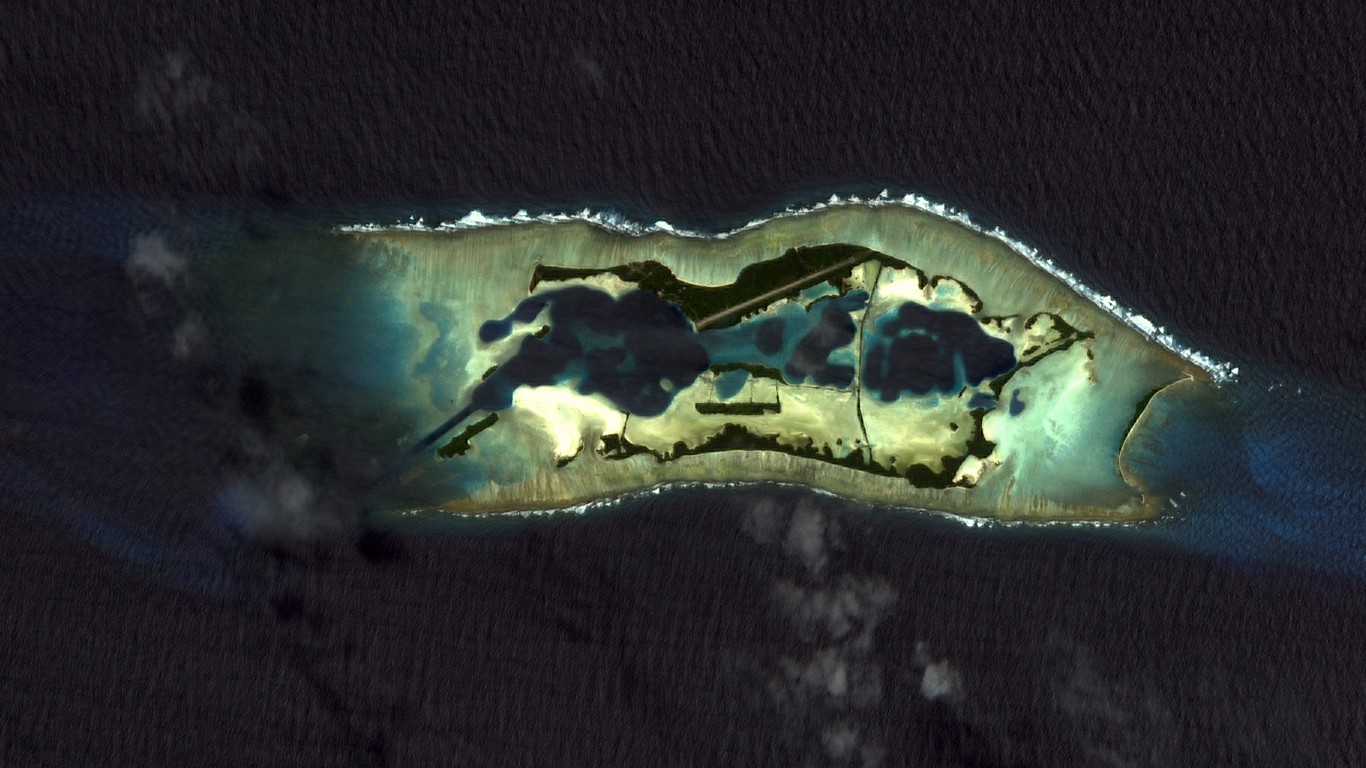
28. Palmyra Atoll, Pacific Ocean
> Closest city: Hilo, Hawaii (population: 44,186)
A truly unspoiled place, Palmyra Atoll is a tiny, remote Pacific Island south of Hawaii. It has become an ecotourism destination, with its undeveloped natural setting and white, sandy beaches.
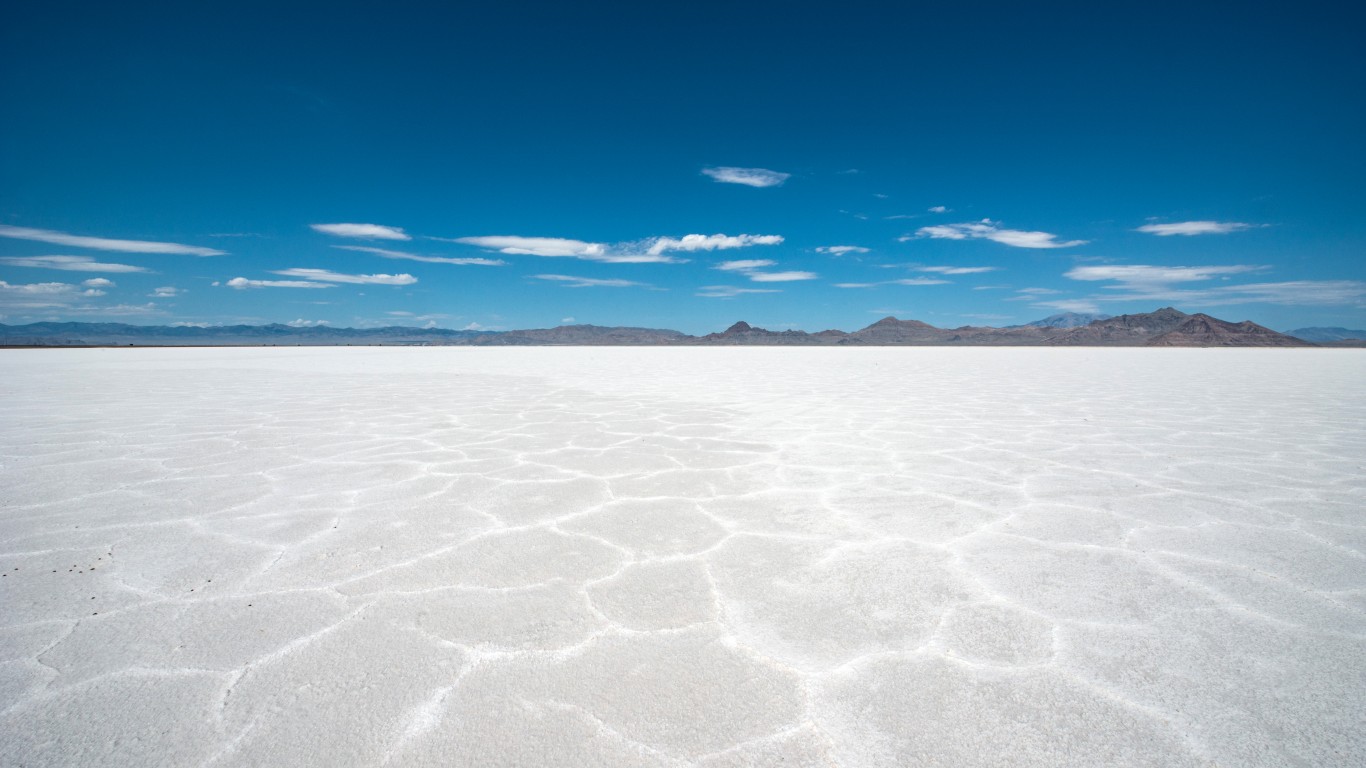
29. Bonneville Salt Flats, Utah
> Closest city: Salt Lake City, Utah (population: 199,723)
A former lake bed, the Bonneville Salt Flats is the largest of several salt flats west of Utah’s Great Salt Lake. Protected by the federal government, it is open to the public and famous for the land speed records set on its expanse.
[in-text-ad-2]

30. Moloka’i, Hawaii
> Closest city: Kahului, Hawaii (population: 28,219)
The fifth largest of Hawaii’s islands is primarily agrarian, sustained by cattle, pineapple, and sugarcane production. Despite its lush scenery and white beaches, tourism plays only a small role in the island’s economy.

31. Painted Hills, Oregon
> Closest city: Bend, Oregon (population: 99,178)
Oregon’s Painted Hills are noted for its fossil beds and hiking opportunities, and, of course, the hills’ orange, red, tan, and black stripes.
[in-text-ad]

32. Haʻikū Stairs, O’ahu, Hawaii
> Closest city: Honolulu, Hawaii (population: 350,964)
The Haʻikū Stairs, also known as the Stairway to Heaven, is a hiking trail offering scenic views, but a difficult climb, totalling 3,922 steps along Oahu’s Ko’olau Mountain Range.

33. Otero Mesa, New Mexico
> Closest city: El Paso, Texas (population: 678,815)
Otero Mesa is the largest of the remaining desert grassland habitats in the U.S. Though it has been used for cattle grazing for generations, it has retained its wild character and scenic vistas.
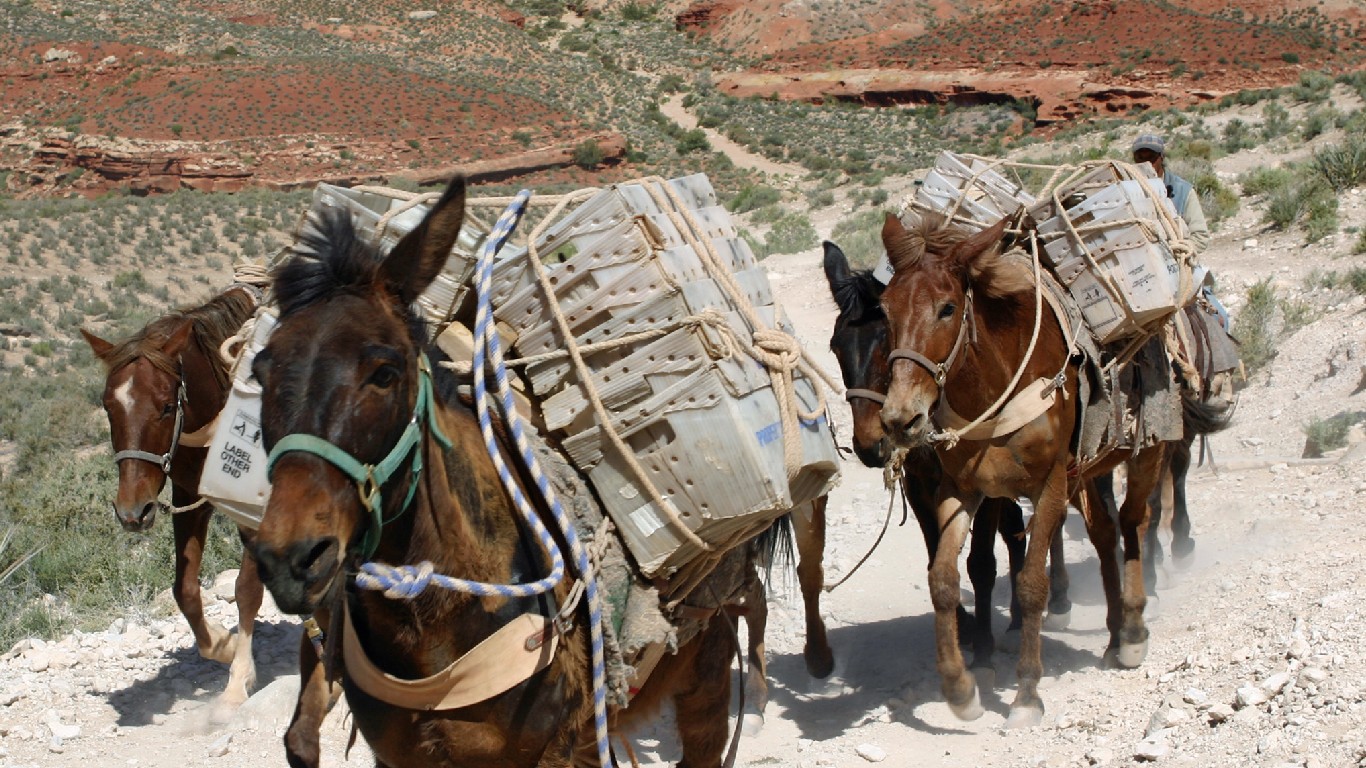
34. Supai, Arizona
> Closest city: Paradise, Nevada (population: 191,238)
Located in the Grand Canyon, Supai is the capital of the Havasupai Indian Reservation. This is the only location in the U.S. where mail is delivered by mule.
[in-text-ad-2]

35. Whidbey Island, Washington
> Closest city: Everett, Washington (population: 110,629)
The largest of islands of Washington’s scenic Puget Sound, Whidbey island has many popular parks and reserves. The island hosts dozens of festivals and events every year.
Start by taking a quick retirement quiz from SmartAsset that will match you with up to 3 financial advisors that serve your area and beyond in 5 minutes, or less.
Each advisor has been vetted by SmartAsset and is held to a fiduciary standard to act in your best interests.
Here’s how it works:
1. Answer SmartAsset advisor match quiz
2. Review your pre-screened matches at your leisure. Check out the advisors’ profiles.
3. Speak with advisors at no cost to you. Have an introductory call on the phone or introduction in person and choose whom to work with in the future
Thank you for reading! Have some feedback for us?
Contact the 24/7 Wall St. editorial team.